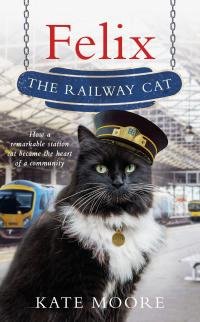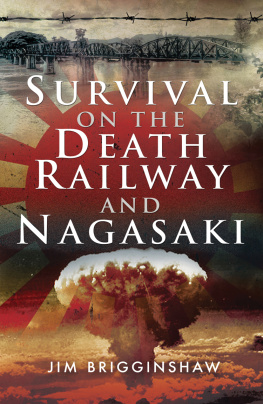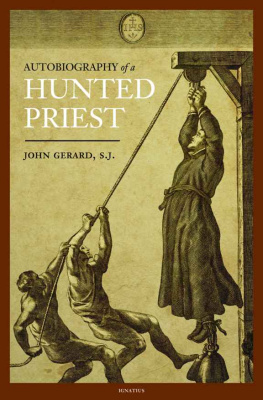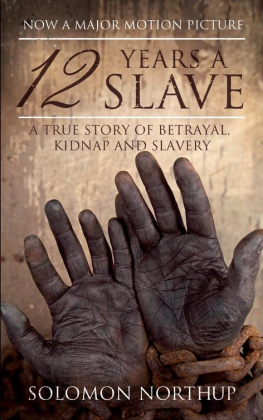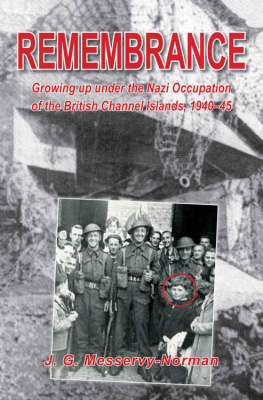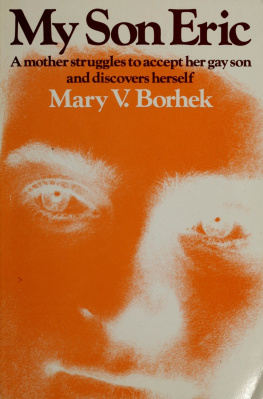Eric Lomax - The Railway Man
Here you can read online Eric Lomax - The Railway Man full text of the book (entire story) in english for free. Download pdf and epub, get meaning, cover and reviews about this ebook. City: New York, year: 1995, publisher: W.W. Norton & Company, genre: Non-fiction. Description of the work, (preface) as well as reviews are available. Best literature library LitArk.com created for fans of good reading and offers a wide selection of genres:
Romance novel
Science fiction
Adventure
Detective
Science
History
Home and family
Prose
Art
Politics
Computer
Non-fiction
Religion
Business
Children
Humor
Choose a favorite category and find really read worthwhile books. Enjoy immersion in the world of imagination, feel the emotions of the characters or learn something new for yourself, make an fascinating discovery.
- Book:The Railway Man
- Author:
- Publisher:W.W. Norton & Company
- Genre:
- Year:1995
- City:New York
- ISBN:0393039102
- Rating:5 / 5
- Favourites:Add to favourites
- Your mark:
- 100
- 1
- 2
- 3
- 4
- 5
The Railway Man: summary, description and annotation
We offer to read an annotation, description, summary or preface (depends on what the author of the book "The Railway Man" wrote himself). If you haven't found the necessary information about the book — write in the comments, we will try to find it.
The Railway Man — read online for free the complete book (whole text) full work
Below is the text of the book, divided by pages. System saving the place of the last page read, allows you to conveniently read the book "The Railway Man" online for free, without having to search again every time where you left off. Put a bookmark, and you can go to the page where you finished reading at any time.
Font size:
Interval:
Bookmark:
Eric Lomax
THE RAILWAY MAN
A POWs Searing Account of War, Brutality and Forgiveness
for
Elizabeth Sutherland Lomax (1877-1942)
and her grandchildren, Linda, Eric and Charmaine, who never knew the story.
This book owes an immeasurable debt to the creativity and skill of Neil Belton. His invaluable contribution to the final text far exceeded the usual relationship between author and publisher. It is true to say that without his help I would not have been able to give final form to so much that I have reflected on for the past fifty years.
I am alive, and was dead Write therefore the things which thou hast seen.
Revelation, I, w. 18-19
Map

CHAPTER ONE
I HAVE A PAINTING in the hallway of my house in Berwick-upon-Tweed, by the Scottish artist Duncan Mackellar. It is a large work set in St Enoch Station in Glasgow on a dusty summer evening in the 1880s. A woman in late middle age, dressed in dark and modest clothes and carrying a parasol, is standing tense and distraught, looking out beyond us, oblivious of any other presence. Behind her the high smoke-grimed glass and wrought-iron walls of the station rise up. She is gazing off the edge of the platform at a vanishing train, so that we see her through the eyes of a receding traveller, and she has the flat restrained face of a person who has learned to swallow grief. Her sudden loneliness is captured as she strains to keep an image of her child, or so we assume, who is on the train heading for the emigrant ship or a colonial war India, Afghanistan, the Gold Coast.
Although it is a conventional image, it is genuinely moving. I have always loved it. Railway stations have always attracted me, not just because trains are there, but because they are also ambivalent places, echoing with completed journeys and shrill with the melancholy noises of departure. Mackellars painting is about the inevitability of separation, the cost of journeying. And we have never created any sound so evocative of separation as the whistle of a steam locomotive, that high note of inhuman rehef as vaporized water is blown off and meets the cold air.
Once in the 1970s I went to St Enoch and stood on the platform at the spot that Mackellars painting creates for the viewer, and the back of the great shed, like an enormous Victorian conservatory, seemed hardly to have changed. The station was not yet quite disused and silent, though a few years later it was destroyed, like so many of the other steam cathedrals. That age is gone now, finally, but the reality of grief, and the consequences of grief, of which Mackellar caught something in his painting, are not so easily banished.
The passion for trains and railways is, I have been told, incurable. I have also learned that there is no cure for torture. These two afflictions have been intimately linked in the course of my life, and yet through some chance combination of luck and grace I have survived them both. But it took me nearly fifty years to surmount the consequences of torture.
I was born in 1919, the year the World War formally ended, the year that Alcock and Brown drifted down out of the rain over the Atlantic and landed their firail bomber in an Irish bog. I remember being told about this feat of aeronautical engineering and skill at a very young age, and thinking about the two intrepid pilots as I was walked along the grey promenade of the seafront at Joppa, to the east of Edinburgh. Joppa is the name of the biblical town where Jonah went when he was fleeing God, and from which he took ship. I discovered soon enough, though it was a long time before space on that scale meant much to me, that this sea was a sheltered inlet, the Firth of Forth, and that even though the distant Fife shore could only be seen in fine weather there were worse seas out there behind the fog and wind.
John Lomax, my father, was a quiet, disciplined, serious man who knew what was best for his wife and child and was unused to taking no for an answer in his own house. Until the age of fourteen he worked for a pawnbroker in Stockport, on the fringe of industrial Manchester, and then in 1893 somehow got into the Post Office, an institution he stayed in until his retirement almost half a century later. He started as a telegraph messenger, the most junior post then available and even lower than the entry grade which he would choose for me when I was sixteen. By the time I was born he was a middle-grade civil servant, a manager of staff in the Edinburgh General Post Office, a stable and trusted official.
My father moved to Edinburgh, a city of politics, law and services in 1909, but all his life remained a child of the industrial revolution, full of vivid memories of coal, smoke, smog and steam power, of great mill engines and railway locomotives and the Manchester Ship Canal. It is hard to explain to young people born in countries that have almost forgotten heavy manufacturing just how awe-inspiring the very processes that shaped our lives could be; for my father, and for me later, great machines were not fearful or distressing but things to be celebrated, as fascinating as the natural world, creatures made by men.
By the time I was able to notice such things, he was part of a reading circle of fifteen or so, men and women, who would visit each others houses and read papers on such topics as the novels of Arnold Bennett, which my father devoured as the nearest thing he could find to a literature of his boyhood world, or the Edinburgh of Sir Walter Scott. My father was also the regional editor of the Journal of the Institution of Post Office Electrical Engineers, to which he contributed local news. And, like all dedicated believers in improvement and discovery, he read H.G. Wells. He had a little library of such books. On his shelves I remember Oliver & Boyds Edinburgh Almanac from the 1830s, some books on popular science and Samuel Smiless Lives of the Engineers.
I also remember my fathers copy of Hendrik Willem Van Loons The Story of Mankind, which came out in 1931. It was an inspiring narrative of achievement and progress, and as a child I absorbed its tale of optimism and invention, each new breakthrough seeming to promise more speed and ease and excitement. One of the most intense events of my childhood was finding the secret chart of The Great Discoveries hidden inside the decorative dust-jacket of Van Loons book. I was convinced that there were thousands of readers who had never looked at the back of the jacket, and that this wonderful branching tree of human ingenuity was for me alone.
My first memory of a world beyond my infant needs was not of an animal or a park, but of a strange mechanical assembly. One of my fathers frequent destinations on those walks beside the sea was the Joppa Tram Terminus, which was situated where the historic main road from Edinburgh to London touched the Firth of Forth. On one of these walks, when I was a very small child, we rounded the comer of Di Rollos ice-cream parlour and found Joppa Road blocked by a huge barricade of tram cars, a wall of maroon and white metal. Each tram was an elegant two-storeyed coach-house, with delicate looking wooden frames surrounding the windows, and each was two-headed, its end windows arranged in a five sided prism. The trams had open platforms at each end from which right-angled stairs disappeared tantalizingly into the open upper decks. They were waiting to take the crowds coming from a race meeting in nearby Musselburgh back into Edinburgh. I stared at this herd of machines. I didnt know there were so many trams in the world.
Font size:
Interval:
Bookmark:
Similar books «The Railway Man»
Look at similar books to The Railway Man. We have selected literature similar in name and meaning in the hope of providing readers with more options to find new, interesting, not yet read works.
Discussion, reviews of the book The Railway Man and just readers' own opinions. Leave your comments, write what you think about the work, its meaning or the main characters. Specify what exactly you liked and what you didn't like, and why you think so.


